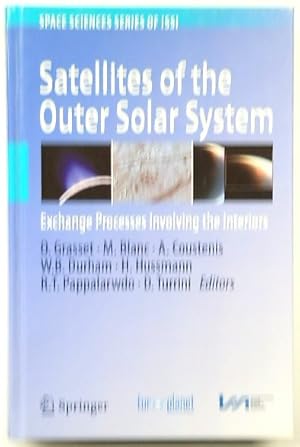Inhaltsangabe
Recent space missions to the outer solar system, Galileo (1996-2003) and Cassini-Huygens (2004-today), together with ground observations, have revealed that the moons of the outer solar system are enigmatic objects, introducing extraordinary challenges for geologists, astrobiologists, organic chemists, and planetologists. Chemical exchange exists through the different layers that form their interiors, and also from the interior to the surface. The most convincing evidence is certainly the discovery of water vapour and ice particles emerging from Enceladus’s active south polar region. Evidence for exchange with a subsurface liquid ocean has also been provided by the inference of hydrated salts on the surfaces of Jupiter’s moons, Europa and Ganymede, as well as the detection of sodium salts in particles originating in Enceladus’s plumes. Aqueous exchange with the rocky core may also be possible, considering that 40Ar has been observed in the plumes of Enceladus during one flyby of Cassini and in the atmosphere of Titan. The ongoing CH4 replenishment in Titan’s atmosphere is additional striking evidence of exchange processes within the moons.
Von der hinteren Coverseite
Recent space missions to the outer solar system, Galileo (1996-2003) and Cassini-Huygens (ongoing since 2004), together with ground-based observations, have revealed that the moons of the outer solar system are enigmatic objects, introducing extraordinary challenges for geologists, astrobiologists, organic chemists, and planetologists. This book will provide the reader with an up-to-date view of what we know and understand of the moons of outer planets: by their complexity, their internal differentiation, their geological and/or atmospheric activity, their still poorly known history and evolution. Many of these moons are actual "planetary worlds", with all the complexity this term implies. In particular, and this is the aspect this book has chosen to emphasize, these bodies are complex evolving systems in which the interactions and chemical exchange processes between the different layers - from core to atmosphere or exosphere - play a key role.Satellites of the Outer Solar System: Exchange Processes Involving the Interiors is aimed at researchers and graduate students who are active in planetary science and related branches in geology, astrobiology and chemistry. This is the second publication of its kind in the Space Sciences Series of ISSI and the result of a successful joint venture between ISSI and Europlanet.Previously published in Space Science Reviews journal, Vol. 153/1-4, 2010.
„Über diesen Titel“ kann sich auf eine andere Ausgabe dieses Titels beziehen.
